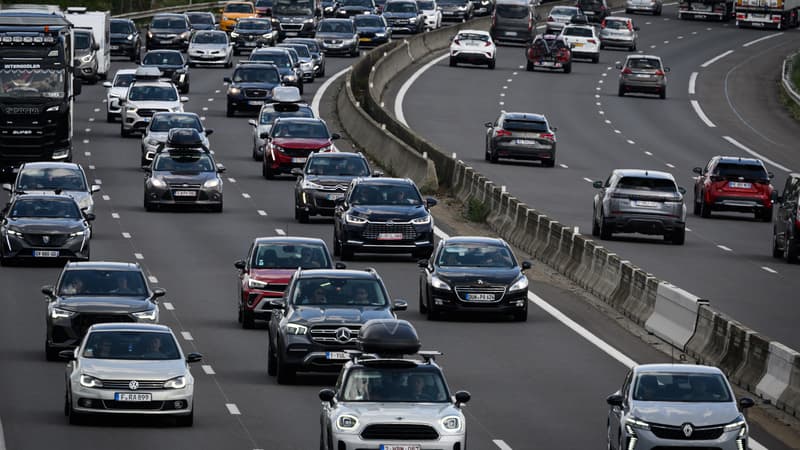Forty kilometers southwest of Paris, on the A10 motorway, a yellow sign announces: “Here we are testing dynamic charging on the motorway”, one of the solutions that could accelerate the decarbonization of road transport.
Beyond this detail, it is difficult to guess that a consortium led by Vinci has been experimenting since September in Angervilliers (Essonne) with induction and contactless charging for electric vehicles.
In the right lane, only a darker surface suggesting recent repairs gives away the test section. But, ten centimeters below the road, 900 copper coils fed by the electrical grid and generating an electromagnetic field follow one another along 1.5 kilometers.
Enough power for trucks
For these tests, four prototypes (heavy vehicle, bus, utility vehicle and passenger car) join the flow of vehicles that use this route. “This is a world first on an open highway,” Pierre Delaigue, project director of Vinci Autoroutes, told AFP.
When a vehicle equipped with receiving coils passes by, each buried device “detects it and sends it a pulse,” which “provides it with power regularly throughout the trip,” explains Guillaume Demond, project director at Electreon, an Israeli startup that designs the charging system.
The receiving coils, plates that weigh about forty kilograms and measure 1.3 meters by 80 centimeters, can be installed in existing vehicles. And ultimately, project partner Hutchinson will be able to industrially produce them for integration during construction.
According to the first measurements by the Gustave-Eiffel University, the transferred power (200 kW on average) is enough to recharge the trucks.
“With this power, half goes to the engine and the other half to recharge the battery. We gain one kilometer of autonomy per kilometer traveled for a heavy vehicle and two to three kilometers of autonomy per kilometer traveled for a light vehicle,” observes Pierre Delaigue.
An encouraging result, since induction is one of the three technologies that are currently being tested to develop the “electric road” (Electric Road System, ERS), a charging system for electric vehicles in circulation that should facilitate the decarbonization of road transport, currently carried out mainly by diesel-powered trucks.
land driving
The other two solutions require contact. In Germany, aerial driving by catenary, inspired by railways, is preferred, while in France ground driving is also being tested.
In Saint-Maurice-de-Rémens (Ain), almost 500 kilometers from Paris, a former military site converted into a road test center is the scene of testing a ground energy solution (APS).
Those responsible for the “100% French” eRoadMontBlanc project – the highway company ATMB, Alstom, the Gustave-Eiffel University and the SMEs Pronergy and Greenmot – are carrying out tests on a road built over 420 meters with “a supply route integrated into the road”, says Patrick Duprat, director of R&D and competitiveness at Alstom.
Adapted from the technology developed in the 2000s by Alstom for the Bordeaux tram, in Girdonde, this system uses “rails” molded in resin to integrate into the roadway without roughness.
To capture the current, a vehicle-mounted articulated arm slides a pad over the short conductive segments of the rails, actuated only when a vehicle passes automatically.
The tests should last “three to six months,” says Florian Grange, innovation project director at ATMB. The results will then be transmitted to the Ministry of Transportation, which must validate the move to “phase 2”.
Beyond the technical differences and their degree of progress, the objective of the two projects – financially supported by Bpifrance and by the France 2030 future investment plan – is “to try to demonstrate that there is a profitable economic model” for the ERS, says Nicolas Hautière, from the Gustave-Eiffel University, who is participating in the Alpine project. “The goal is to have affordable prices in the long term,” concludes Guillaume Demond, stressing that induction “is not an option (only) for Porsches.”
Source: BFM TV


